
3000 Years of Type Dis-Integration
Walter Smith, January 5, 2011

The schizoid nature of western civilization gives credence to our emphasis on the necessity of using all of the functions (S, N, T, F), in both attitudes of Introversion (I) and Extraversion (E).
While whole type development is something that we all strive for, it is not only for individuals—it is also for civilizations. According to Sartorius, wholeness is a way of piercing reality, of cutting through our own biases and prejudices that prevents us from seeing only that which supports our point of view. From a type perspective, it means using all four functions (or all eight function-attitudes) even though we have a preference for only a few. When civilizations emphasize only one part of psychological type, they diminish themselves and set themselves up to see the world through distorted lenses. The only civilization to achieve wholeness, according to Sartorius, was ancient Egypt. The Egyptians saw the world as Unus Mundus—one world. There was no separation between Thinking (T) and Feeling (F), Sensation (S) and Intuition (N), or between the spiritual and the temporal.
The first split to occur happened in pre-Socratic and Socratic Greece. According to Sartorius, this was a split between the inner and outer life, or in psychological type terms, between Introversion and Extraversion. This split is portrayed, on one hand, by the Greeks’ extraverted glorification of their victory over the Persians with the erection of a huge gold statue of their patron goddess, Athena. Introversion, on the other hand, was represented by Socrates who promoted the idea that ‘the unexamined life is not worth living.’ Socrates was sentenced to death for not believing in the gods of the state. Actually, no one else believed in them either, but it was expected that as part of society, one was to participate in the worship of the gods—an example of how Extraversion was valued over Introversion. Socrates would not participate in worshipping something that did not accord with his internal values. In type terms, we might speculate that Socrates was motivated by his Introverted Feeling (Fi) function, in that Fi is where non-negotiable core values come into play.
The later Greeks, the Hellenists, split the world even further. They said that there were two natures to the world—the spiritual world and the material world, with the spiritual world being superior to the material world. This split led to the idea that humans have a body and a soul where the body is seen as corrupt and the soul is not. The tradition clerical collar of priests and ministers reflects this ancient belief. The white collar suggests that everything above the neck is pure while the black suit is indicative of the impure body. In type terms this represents the split between the Intuitive and the Sensate, with intuition seen as desirable and good while the senses are seen as bad or evil.
From this author’s perspective, two misconceptions arose from the duality of body and soul. On one hand, if the body (Sensation) is evil, bad, or not important, then it follows that one can do anything with it one chooses, and it doesn’t matter. The Apostle Paul confronted this situation in Corinth when a group of Christians thought it permissible to engage in what we would consider wife-swapping today as long as they kept their spiritual lives intact. However, eventually, sex came to be seen as evil. The Doctrine of Original Sin says in part that sin is transmitted through sexual intercourse. In addition, St Augustine warned fathers of boys entering puberty that the fathers should instruct their sons not to have impure thoughts lest the sons have wet dreams. Our present day conflicted attitudes about sex probably have their origins in this Hellenist split of the world between matter and spirit, body and soul, and Intuition and Sensation.
The Romans were great administrators and utilitarian in their approach to life, according to Sartorius. They further split life into what was useful and what was not useful. At first, the Roman religion focused on ancestor worship, but the Romans soon began to acquire and to Romanize the Greek pantheon, and each god came to have his or her own private following and chapel. Valuing usefulness above all caused the symbolic life of the Romans to become privatized. According to Temperament theory, administrators are Guardian ESTJs, so we can postulate that the Roman culture was an STJ culture.
One can imagine the threat to Rome that Jesus caused when he came preaching that “the last shall be first and the first shall be last” (Mark 10:31) or that “there is more joy in heaven over one sinner who repents than over ninety-nine righteous persons who need not repentance” (Luke 15:7). Jesus’ elevation of the weak, the poor, and the disenfranchised constituted a threat to (or balancing of) the dominant STJ culture. Shepherds, who were considered to be the scum of the earth and not allowed to live inside the city walls, were the first to hear of Jesus’ birth in the Gospel according to Luke. Jesus dares to talk to the Samaritan, both a foreigner and a woman, and offers her eternal salvation. In this way, the Gospels suggest that there is as much value in that which a society marginalizes as there is in the cultural mainstream. Contrary to the utilitarian outlook of the Roman society which valued work and workers, Jesus says that even those who cannot work are valuable. He counsels individuals not to rely on external signs of success (power and money) as the Romans did but to “lay up for themselves treasures in heaven where neither moth nor rust consume” (Matthew 6:20). While some claim that Jesus cannot be typed because he could access all of his functions, we can observe that Jesus could often champion an NF idealism which came into conflict with the STJ culture of Rome. Jesus thus introduced an Intuitive/Feeling perspective into the predominant Sensing/Thinking culture.
The Renaissance, according to Sartorius, embodied all the previous splits while adding a new one—the individual vs. the collective. The value of the individual became paramount and it started with the signing of the Magna Carta in 1215. Sartorius said that when we look at paintings in the Renaissance, we see for the first time people appearing in the cities in which they live, suggesting that the individual has become the focus of attention.
In the Renaissance, tangible reality (Sensing) became the main focus of perception, according to Sartorius. Symbols, which come from the Intuitive approach, were transformed into simple allegories or signs, which align with the Sensing perspective. Symbols point to a large and deep reality that extends beyond themselves. Signs, on the other hand, only point to themselves. For example, the cross is more than an instrument of death in the Christian faith—it also represents resurrection. A stop sign, by contrast, only means one thing—stop. By transforming symbols into allegories, the Renaissance stripped Intuition from life and emphasized the Thinking and Sensing part of life, and in doing so robbed life of power. For example, Aphrodite was no longer the goddess of love with the power to create love but only a sign of love.
With the Protestant Reformation, the Mass (or the Lord’s Supper) lost its status as a symbol where something magical happened (the bread and the wine becoming the body and blood of Christ), and was reduced to only a sign of the presence of Christ, or in the words of Protestant Reformer, Ulrich Zwingli, “a memorial to Christ.” Again, rationality took the lead and the symbolic life disappeared from the collective. Sartorius said that paintings of the resurrection during this time were realistic, almost like photographs, showing the privileging of the concrete over the symbolic. From a type perspective, this period was dominated by the Thinking and Sensing functions, much like the Roman period was.
Indeed, in the 19th century, the United States embraced the STJ functions by building big factories, schools, universities, railroads, governmental, and economic institutions. There did arise a romantic (NF) period in 19th century European literature, represented by Goethe, Shelley, and others. Nevertheless, it was dwarfed by the overwhelming support given by the collective psyche to the establishment of big institutions. Denominations flourished, which led to the fragmentation of the religious community and the decline of the symbolic life. With no central message emanating from Christendom, as was the case prior to the Reformation, religion once more became privatized.
The symbolic life, the Intuitive outlook, made a comeback through the rise of nationalism among the developed countries. Nationalism provided a sense of community and togetherness, according to Sartorius. It connected peoples’ need for symbolism to an outward collective expression. In the United States, people were able to connect their belief in God with the formation of the nation so that the nation became the realization of God’s will on earth. Other forms of nationalism, while allowing people to feel connected to each other, demanded that they also die for that connection. Millions had to die in WWI and WWII to uphold the nationalisms of several nations. In these latter examples, Intuition was combined with emotion, but left out Thinking.
The beginning of psychoanalysis with Freud, Adler, and Jung in the early 20th century was an attempt to bring the symbolic back into individual lives because the collective, the people in general, had lost the symbolic. The symbolic now had to be carried by the individual. Jung’s Red Book is an example of an individual having to develop the symbols of his own psyche. “It is no wonder we are seeing more psychological disturbances today,” Sartorius said. “People don’t have the ability to participate in collective symbols because there are none. As a result, they have to create their own symbol within themselves and that can be extremely difficult, especially if one has a difficult upbringing.”
The problems we face today are a result of the loss of the symbolic, the loss of Intuition in our lives, and until we regain a symbolic vision for our collective lives we will continue to suffer from our current problems, for “without a vision, the people perish” (Proverbs 29:18, KJV).




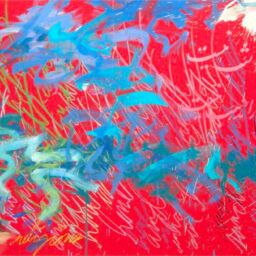

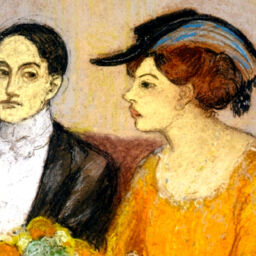


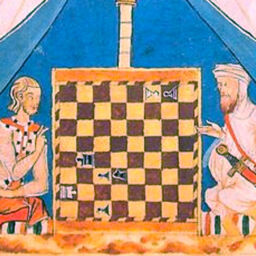
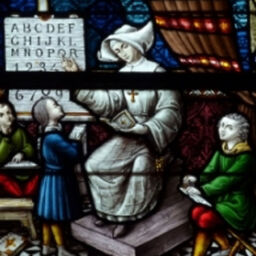
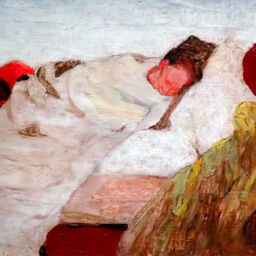


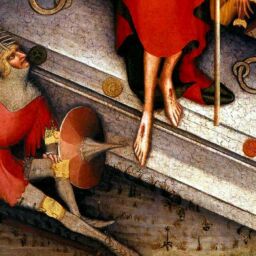
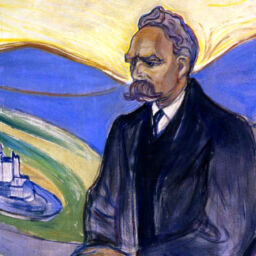
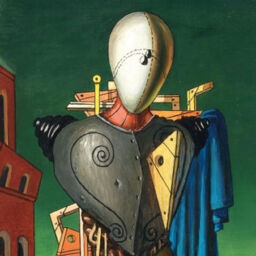

[…] This post was mentioned on Twitter by Bonnie Bright. Bonnie Bright said: 3000 years of dis-integration? Is the western #mind irreconcilably divided? http://bit.ly/fsmGgz RT@AshevilleJungCt #depthpsych #culture […]